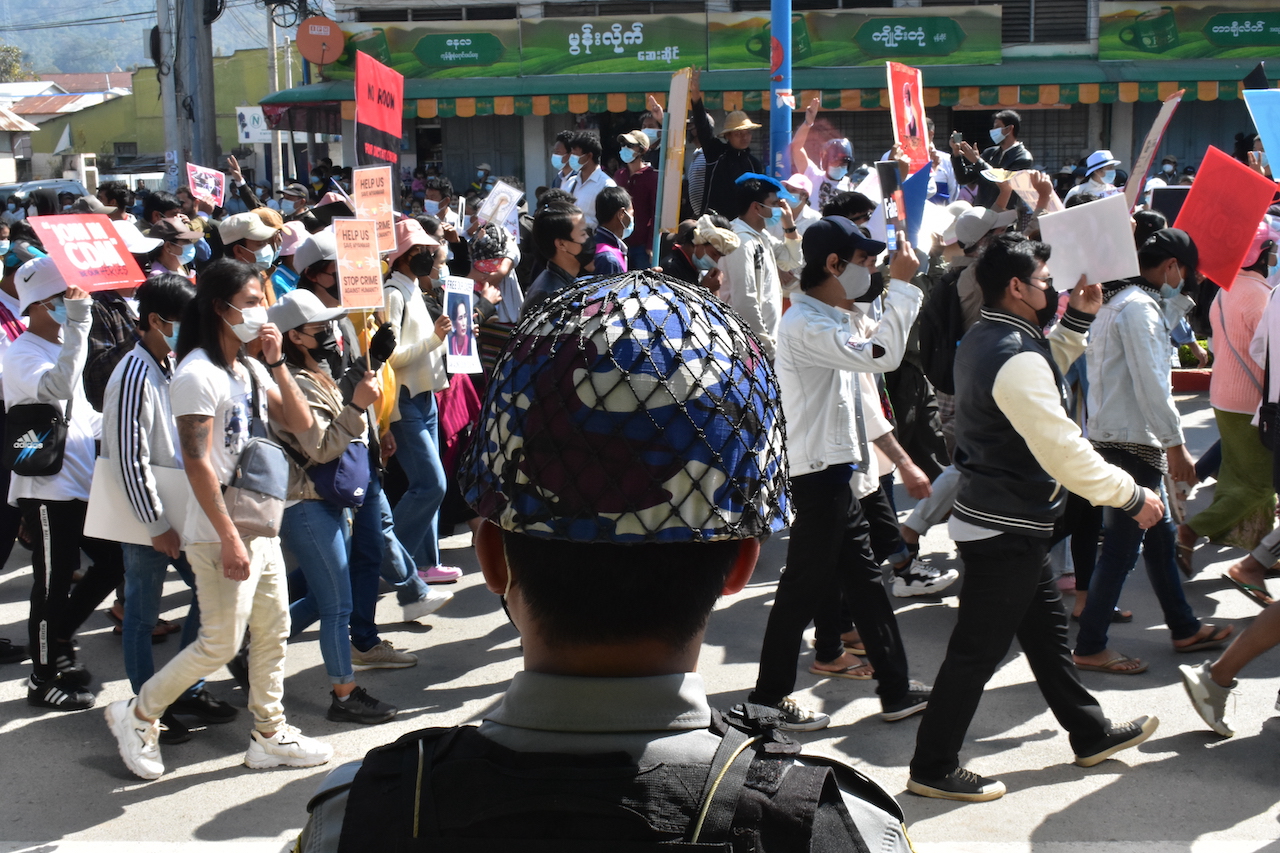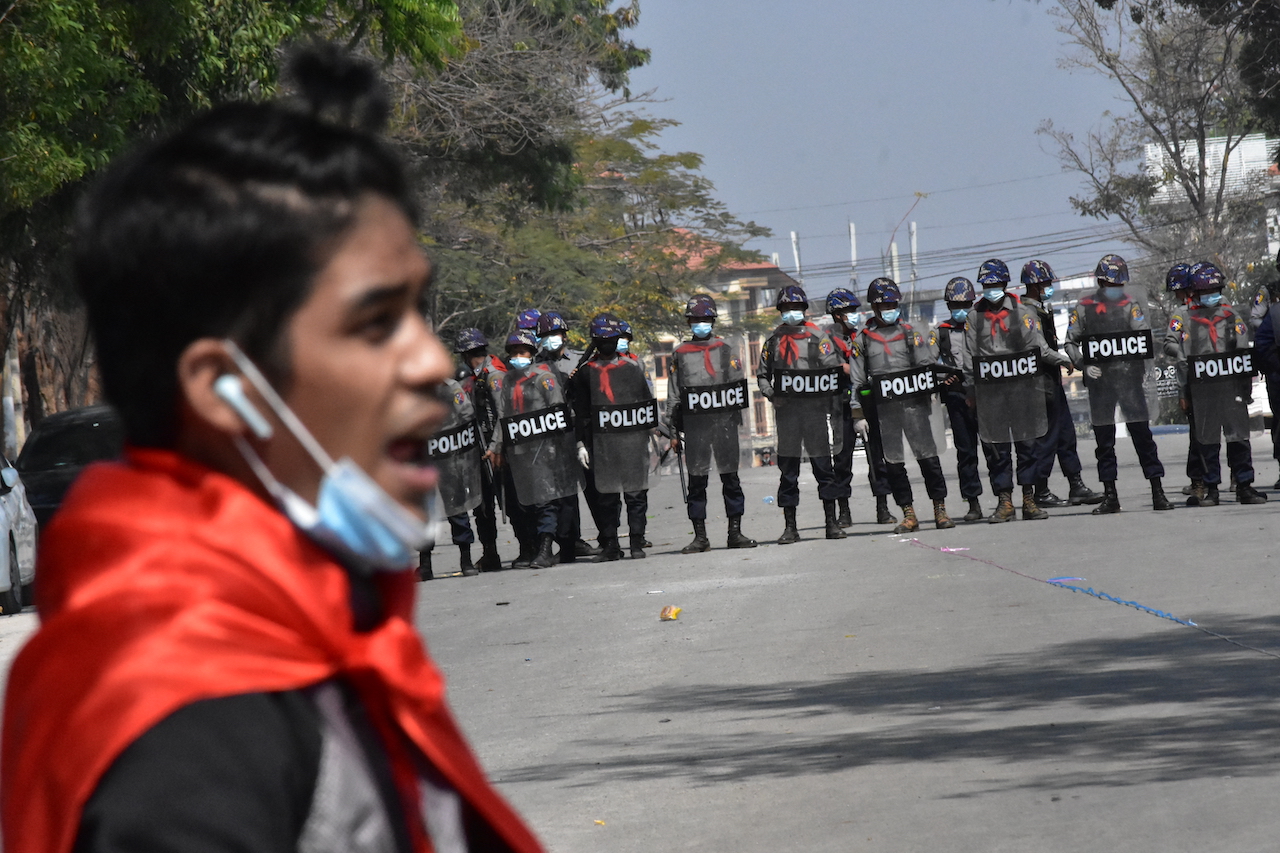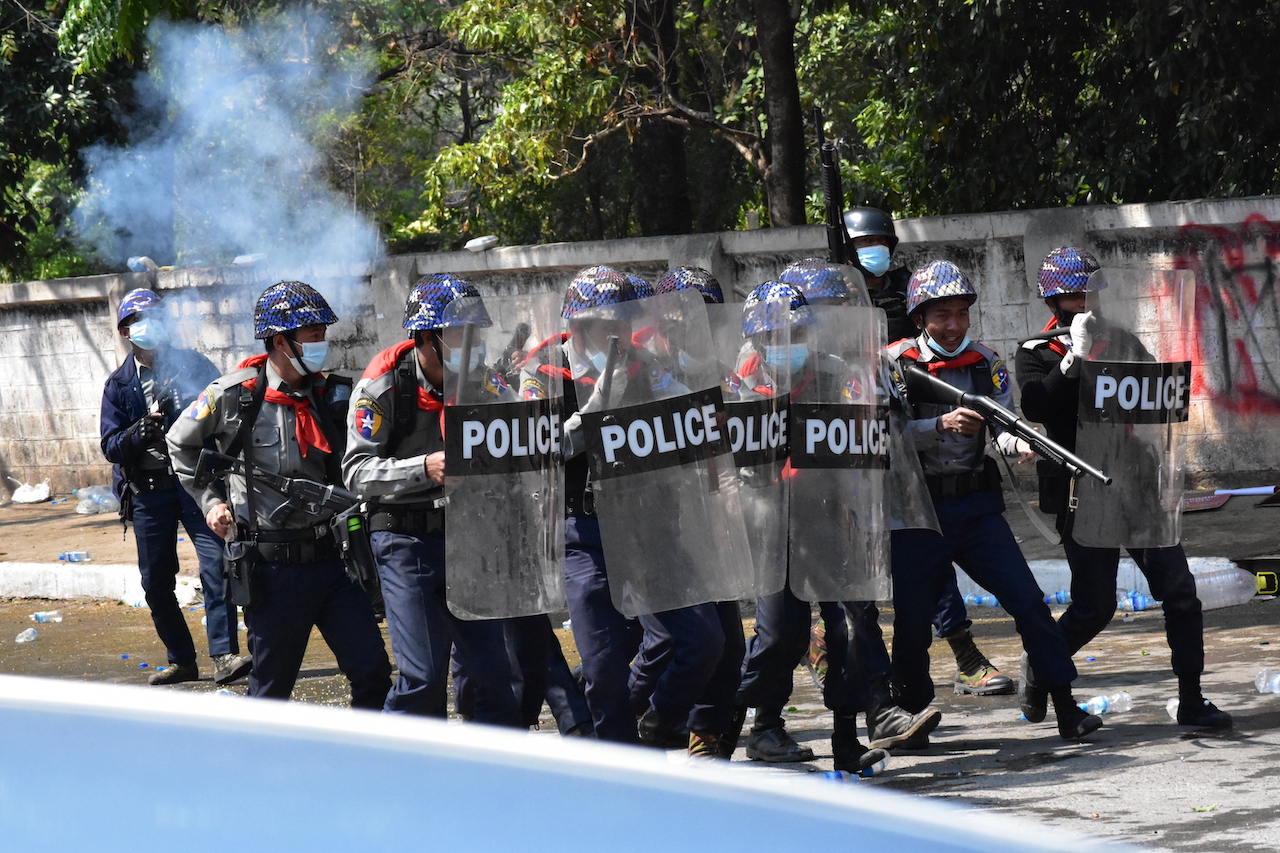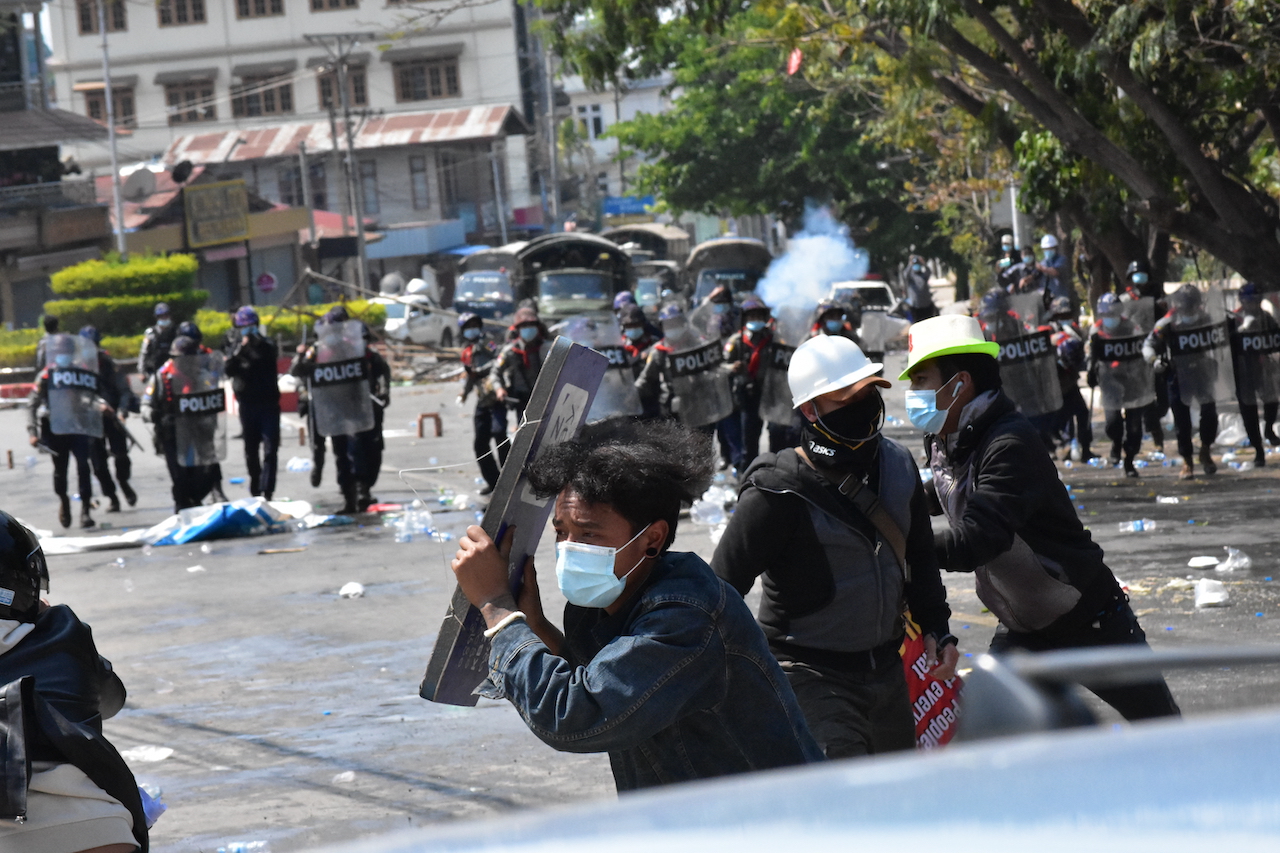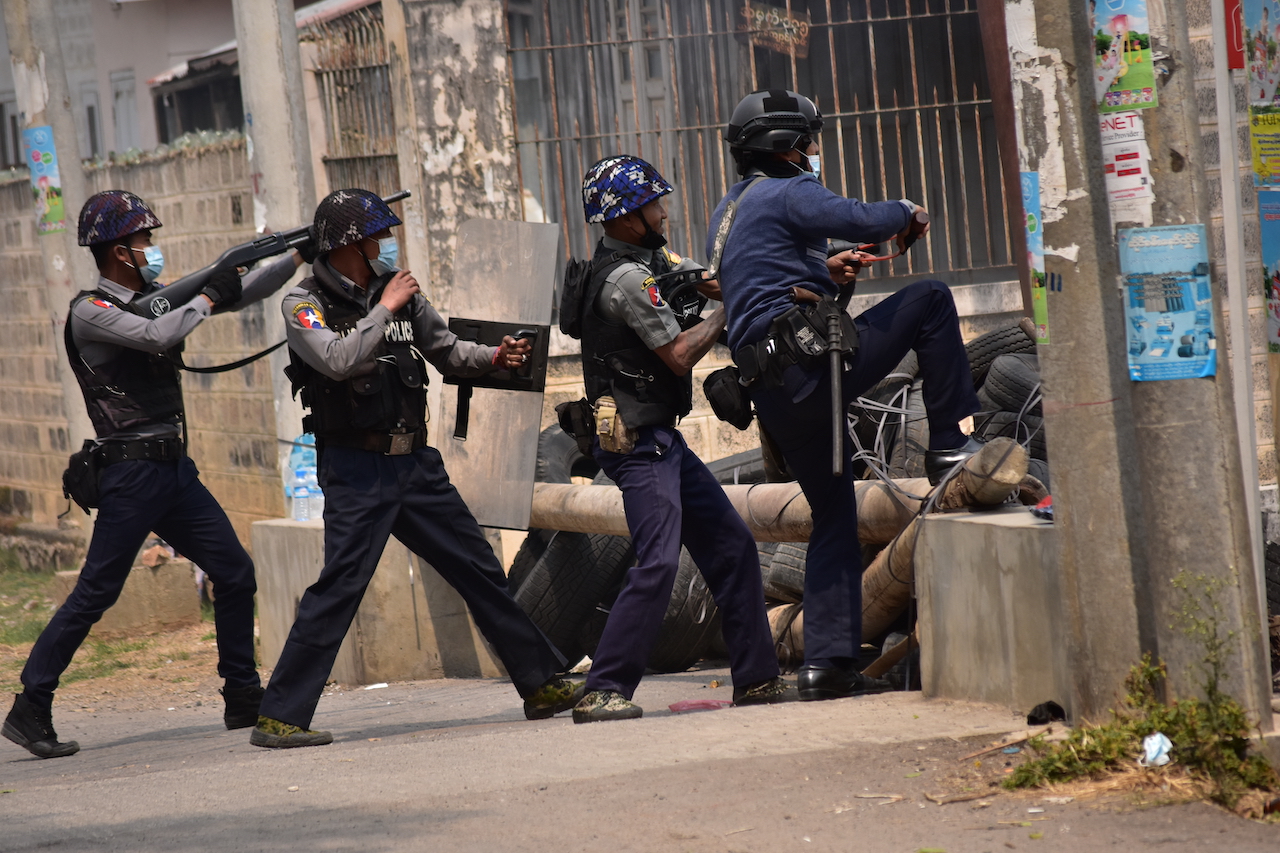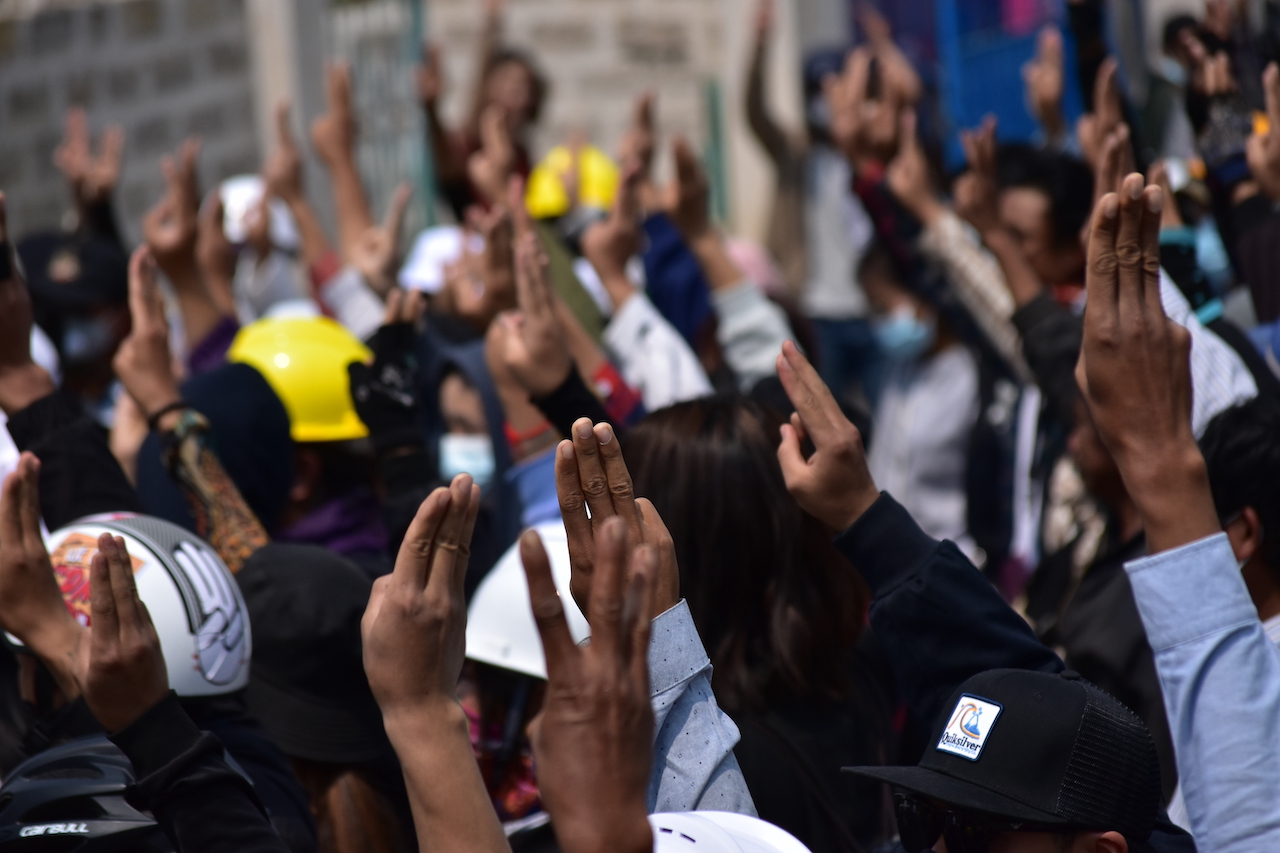“They arrest whoever stands in their way,” says the Polish photographer, who, after photographing over 30 protests in the country, was detained for 13 days in March 2021. Here, he reflects on his experience
On 11 March 2021, Robert Bociaga found himself surrounded by 10 police officers and army soldiers down a small alley in the hilltop city of Taunggyi, east Myanmar. He was beaten with batons on his head and arms, detained and threatened with deportation. Bociaga was in Taunggyi to cover the civil disobedience movement, a series of labour strikes in opposition to Myanmar’s military coup. He was released after 13 days, and deported.
“They arrest whoever stands in their way,” the Polish photographer says over the phone in August, from a busy street in Kenya where he is now researching the impact of marine poaching and industrial fishing. “The situation is completely out of control and they don’t really care who someone is or what someone did. Right now, no one is safe in Myanmar.”
Bociaga arrived in Myanmar at the beginning of 2020 as a traveller. He had been travelling in Southeast Asia for the last three years after graduating with an MA in Law. When the pandemic hit, he chose to live out the restrictions in Myanmar rather than take a relief flight home. “When I got more freedom to move around, I started investigating different things, stories,” he says. Travelling reignited his childhood passion for photography and it soon became a job. “I found it interesting to capture moments which are linked to certain events, or certain transformations,” he says.
By March 2021, Bociaga had attended nearly 30 protests in Myanmar to document the peaceful resistance to the military coup that happened in February. He began working with the DPA German Press Agency at the time, and eventually published photo stories with CNN, Deutsche Welle and the leading regional magazine, The Diplomat.
Bociaga had been in Myanmar for nearly a year, when the military, the Tatmadaw, arrested the country’s elected leaders, declared a state of emergency and established their own rule on 01 February 2021. Instantly, civilians began protesting. In the first few days, people made their anger heard – bashing pots and pans and tooting their horns – then, a group of medical staff went on strike. On 04 February, the first group of protestors took to the streets of Mandalay, Myanmar’s second biggest city.
The photographer was captivated by the passion of the people around him, fighting to keep democracy alive. “I wanted to show their anger toward the junta and [how] they had very peaceful intentions,” he says. “Now, the police have escalated it to complete chaos.”
By the end of February, over 1,000 people had been detained and 50 people killed by security forces. The descent to violence was gradual, Bociaga says, with the military first dispersing crowds with rubber pellets, before it began open-firing at protests and harassing protestors. “My photography emanates to people abroad the persistence of the demonstrators, that many of them will stand up to the police officers and resist their gunfire.”
“As foreigners, we should be ready to take more risks because if local journalists are arrested, they have less chances of getting out, because they have no embassy”
Multiple journalists were wounded during violent crackdowns in May and June 2021, and there were at least 32 journalists in Myanmar’s prisons as of 01 July 2021, according to the Committee to Protect Journalists. Bociaga feels lucky for being detained for only 13 days. His experiences spurred him on.
“As foreigners, we should be ready to take more risks because if local journalists are arrested, they have less chances of getting out, [because] they have no embassy,” he says. “It motivated me to work in hostile environments like Myanmar.” He wishes to return to Myanmar if democracy is reinstated. “It was heart-breaking to see young people live in such circumstances to lose their lives,” he says, noting how unimaginable it was to see the country transform from peace to conflict in the short year he was there.
The coup is the first conflict the 29-year-old photographer has covered, but it hasn’t been his last. After he was released from prison in Myanmar, he briefly returned home to Poland before moving on to Ethiopia, where he spent three months researching the conflict between government forces and regional groups. Bociaga is now writing a book with the aim to unpack the complexities of the conflict and its impact on the region.
In Ethiopia, Bociaga kept a low profile doing his journalistic work because locals weren’t receptive to foreign press, although he still aimed to capture “the humanitarian crisis which the Ethiopian authorities claim doesn’t exist”. In Myanmar, he felt the contrary: he was there to elevate people’s voices beyond their own country.
Bociaga is unsure what the future holds, but he hopes his coverage has had an impact. “For people living abroad, out of Myanmar, it might simply be unimaginable what their situation is. That’s why it’s so important to take photographs, or videos because attention is very short these days. They might not read much of the text, especially like this crisis in Myanmar that’s already six months, so the impact of photography is important.

